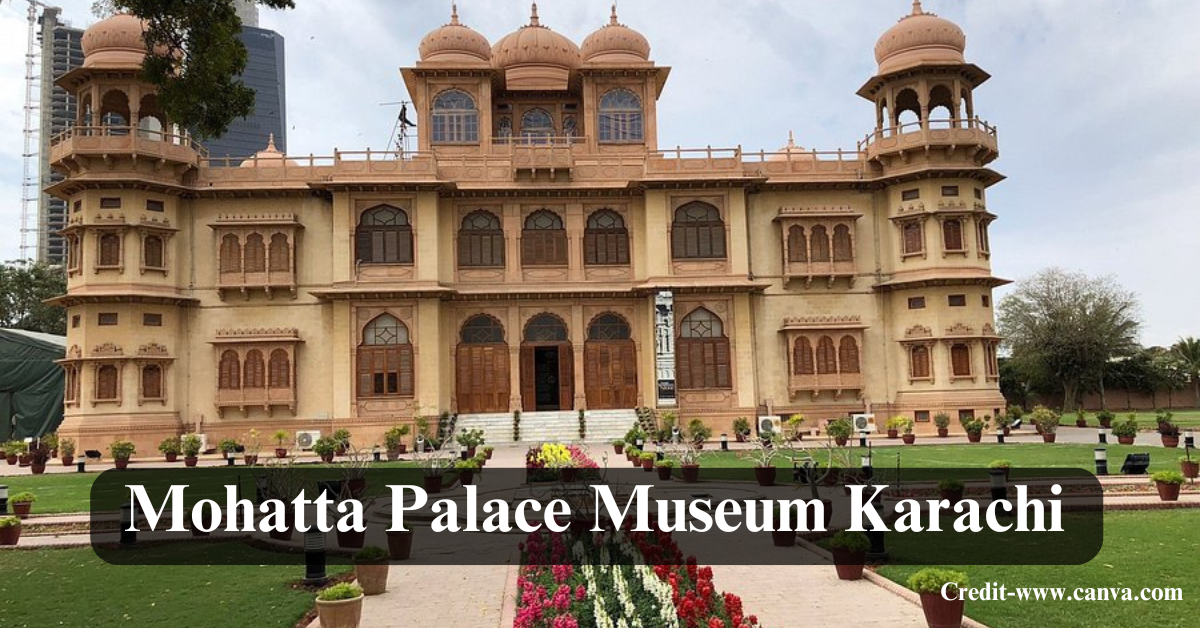Imagine you walk through Clifton’s streets in Karachi: cars honk, and the heat clings to your skin. Then you see it – a large, pink palace glows under the sun. Colored glass brightens the windows, and the railings cast delicate shadows. For a moment, the city stops.
That structure is the Mohatta Palace Museum, a building that looks like someone moved it from a fairy tale into the city – it is more than just a pretty sight. It holds stories, art, history, and memories. People built it in 1927, plus famous people lived there. In 1999, it opened as a museum. This palace is a significant destination to visit for a deeper understanding of Karachi.
Table of Contents
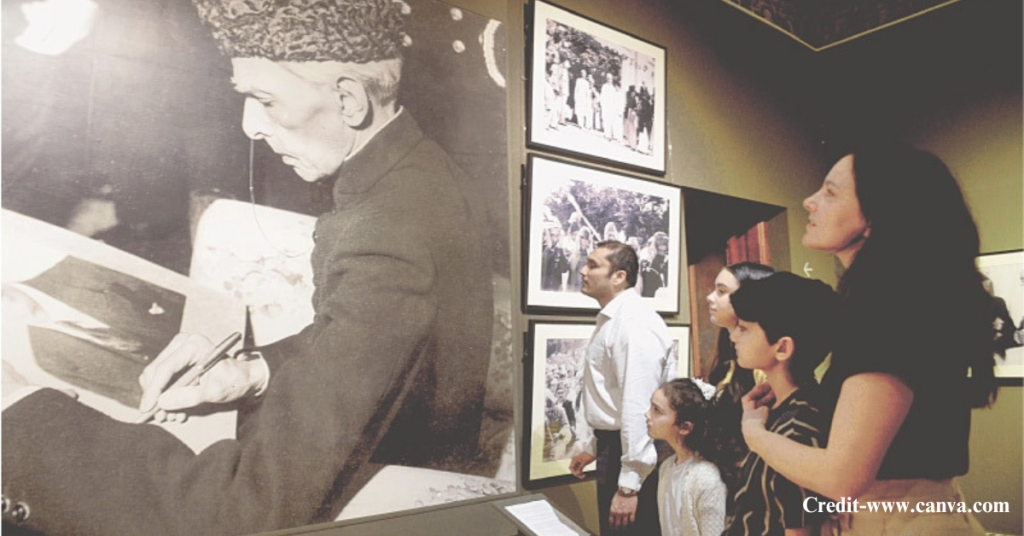
A Palace Built from Love
A man named Shivratan Chandraratan Mohatta, a wealthy businessman from the Marwari community, begins the story. In 1927, doctors told him that sea air would aid his ill wife. He then decided to build a summer home for her near the sea.
He asked Ahmed Hussain Agha, one of India’s first Muslim architects, to design a special building. What they built was more than a house – it became a symbol of love, hope, and sound design.
The palace was constructed using pink Jodhpur stone from Rajasthan. It also used the Gizri stone from Karachi. The combination of these stones helped the palace show its soft pink and beige colors.
Main features of the building:
- Nine domes shaped like flowers
- Stained glass windows that change colors in sunlight
- Teak wood staircases that still shine
- Wide balconies that catch the cool sea breeze
Carvings of peacocks and flowers cover every corner.
The builders formed it in the Indo-Saracenic style. This style is Gothic design. The designers planned it well, so it fit Karachi’s hot weather – it kept its refined look.
From Summer Home to Museum
After the 1947 Partition, Pakistan came into being, and the Mohatta family moved to India. The government took the property plus used it for the Ministry of Foreign Affairs.
Fatima Jinnah, the sister of Pakistan’s founder, lived in the palace in 1964. She remained there until she died in 1967. The palace remained shut and still for almost 30 years.
The Sindh government and a group of art lovers stepped in in 1995. They repaired and cleaned the palace, fixing its damaged parts. They also have a deep sense of responsibility on September 15, 1999.
The work included mending the cracks in the stone. Workers cleaned the outside walls – they restored the stained glass. The gardens also became attractive again. The people who led the work felt a deep sense of responsibility for saving this place.
What’s So Special About Mohatta Palace?
You may have seen pictures, but to truly understand this place, you need to visit.
These are some good parts to find
Underground Tunnel – A sealed tunnel once linked the palace to parts of it that remain visible.
Hot in addition to Cold Pool – Down in the basement, a marble pool with changing rooms sits there. This offered comfort before air conditioning.
Rooftop Barsati – A shaded space on the roof allowed people to pray, relax, or discuss family matters.
Shiva Temple – A small temple at the back is where Mohatta’s wife prayed each day. It does not open now, but it can still be seen.
Floral besides Peacock Motifs – Carvings of hibiscus flowers, marigolds, along with peacocks adorn the walls, windows, and railings.
Each corner tells a story if one looks closely.
These features show the love and care that built this place – it is not only about large domes and decorated windows. It is about the smaller parts – the prayer space, the hidden passage, and the fine pool below ground. Such artifacts reveal how people lived, meditated, or stayed cool before the advent of contemporary technologies in a brittle and somewhat wild world.
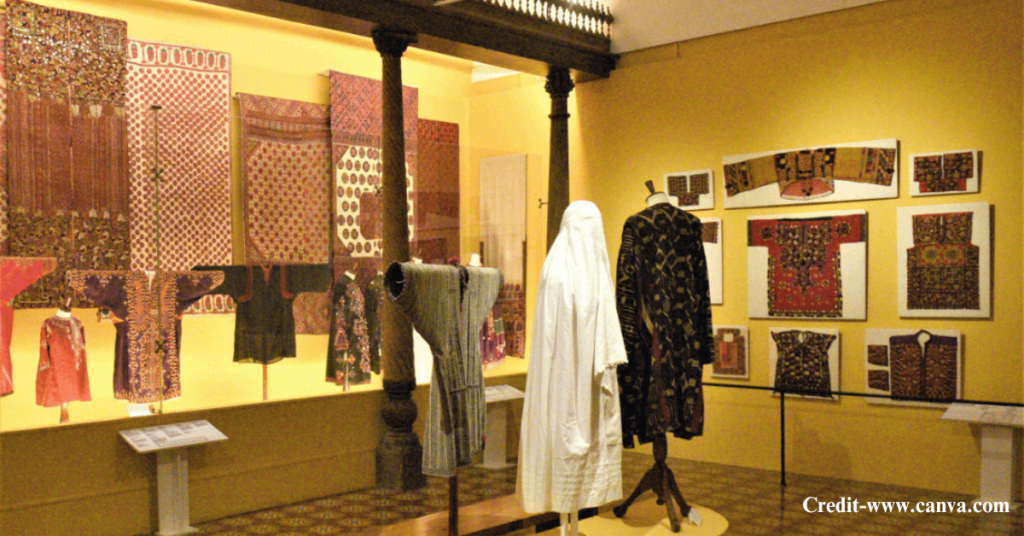
Inside the Museum: What You’ll Find
When you walk into the museum, you pass through Pakistan’s history and art.
Permanent displays feature these items.
The collection features paintings by well-known artists, including Sadequain, Chughtai, and Jamil Naqsh. The collection also holds old textiles, including silk and scarves. These scarves come from Sindh’s Talpur period.
- “Tale of the Tile,” which shows the craft of ceramic tile making.
- Gandharan statues and old documents from Pakistan’s early days.
These pieces do not just show what artists produced – they also help us grasp what people held dear, how styles shifted, and the role art played in shaping national identity.
Changing exhibits have shown
- “Pakistan at 75,” which presents maps, posters, and photos showing how the country developed.
- Hal Bevan Petman’s portraits of important figures from early Pakistan.
- Jhuley Lal, which combines old Sufi stories with new art.
You’ll find lectures, school trips, workshops, and hands-on art classes here. This is not just a place to observe old items – it is a place to learn and to produce.
Often, you will hear talks by artists, student group tours, and exhibitions that change every three or four months. Something new is always there to enjoy, even for those who have visited before.
Planning Your Visit
The museum is open on Sundays from 11 AM to 6 PM. The museum shuts its doors on Mondays plus public holidays. An adult ticket costs Rs. 30. Children under 12 years of age enter free of charge.
What to expect:
- No cameras inside, but outside photography is allowed
- Security checks at the entrance
- Wheelchair friendly in the garden, but the upper floors may be hard to access
You can easily spend two to three hours here, especially if you take a guided tour. The tours are full of small stories that you won’t find on display boards.
Best Times and Photo Tips
December marks the ideal time to visit, lasting from late December to late February. Another bonus of this season is that the weather remains nearly suitable as the garden opens up an exhibition of blooming flowers.
Look for photo spots in these places
Take a photo from the front of the palace with the domes in the frame.
The side arches offer places for portraits.
Go to the roof for a great view during events.
After rain, the marble floors show the building’s reflection well.
Tips for your visit
Wear plain colors. This way, your clothes do not clash with the background.
Visit around 5 PM for the best light.
Use hashtags like #MohattaPalace and #PinkPalaceVibes to share your shots!
What People Say About Mohatta Palace
Many visitors leave with big smiles and better knowledge.
Here’s what they often say:
Loved:
- Peaceful garden in a busy city
- Beautiful architecture
- Helpful staff if you ask questions
People want more objects to touch or interact with; they also wish for better signs inside. A small café or bookshop would allow visitors to relax after their visit.
You see many people there, including families, students, artists, couples taking selfies, and single travelers quietly drawing. People do not just walk through this place—the past plus the present meet here.
Some people even come to the garden with a notebook or a sketchpad plus sit. Other people bring friends who visit to show them a peaceful, proud part of Karachi.
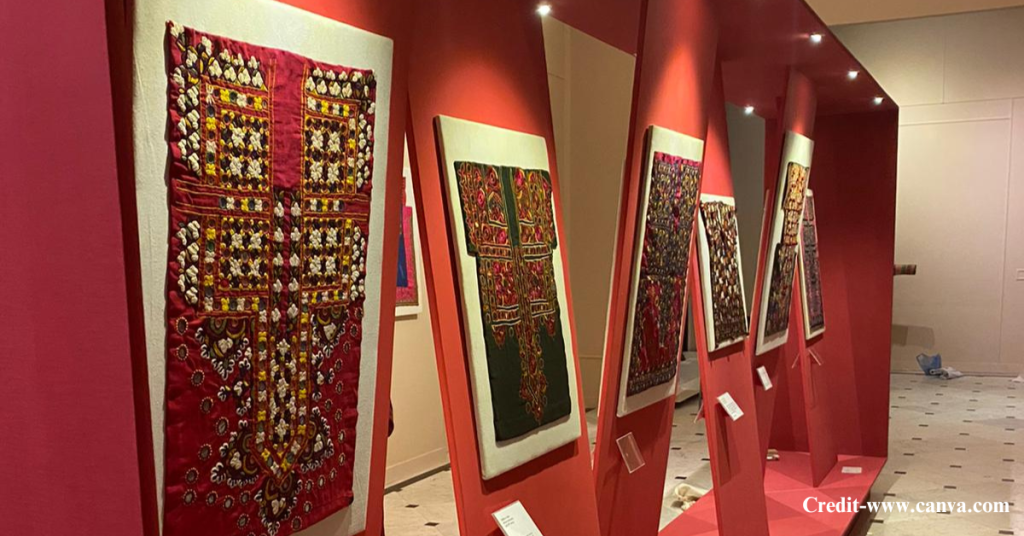
Events, Workshops, and Learning
The museum doesn’t just sit quietly. It’s always hosting events and classes:
Some recent events:
- Miniature painting workshops
- Textile and weaving demos
- Art talks by local experts
- School field trips
Inquire about internship programs or volunteer work if you are interested in participating. A student of art or history learns a great deal at this place, more than in a classroom.
Some events take up half a day, including garden breaks, snacks, and talks with artists.
The organization also works with schools and universities – these activities help students grasp history and art in a real way, not just from books. This approach connects young people with culture.
FAQs-
Can my children visit the Mohatta Palace Museum?
Yes. The Mohatta Palace suits families. Children like the gardens and the windows that show many colors. Watch your children.
Is the museum open every day?
No. The museum is open from Tuesday through Sunday, 11:00 AM to 6:00 PM. It is closed on Mondays and public holidays.
What is the ticket price?
An adult pays approximately Rs. 30. Children under 12 do not pay.
Can I take photographs?
You can take pictures outside. You cannot take pictures inside.
Does the museum allow wheelchairs?
Visitors in wheelchairs can easily access the garden and the ground floor. But no lift goes to the floors above.
How long should I stay?
Plan to stay for at least two hours. People who appreciate art may wish to stay longer.
Is there a café or a food place inside?
No. However, there are many nearby spots in Clifton, such as Xanders and Gloria Jean’s.
Can I get a guided tour?
Yes. Please ask at the front desk upon entry.
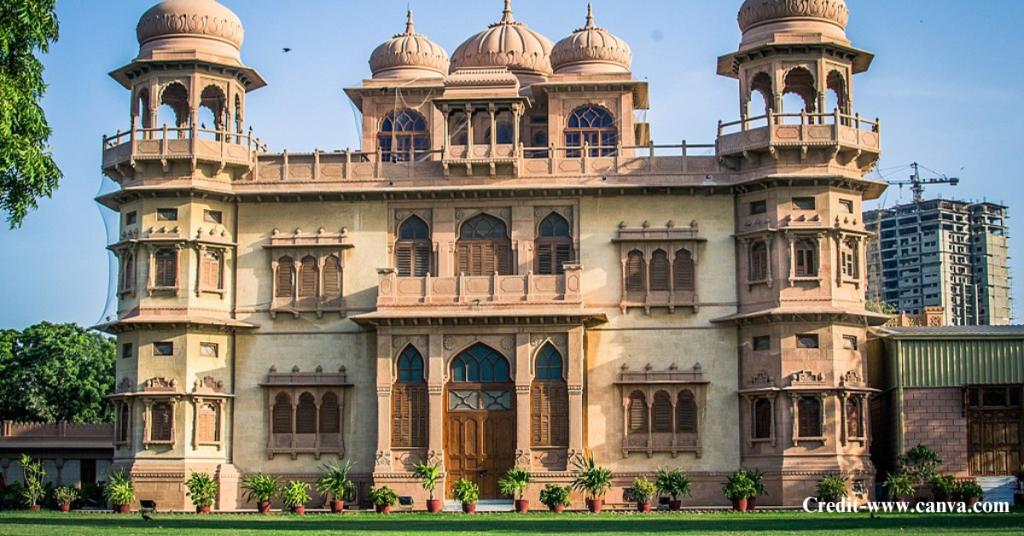
Final Thoughts
Karachi alters rapidly. Tall buildings emerge daily. The Mohatta Palace, however, preserves the past – it links people to something larger. If you’re in the area, please stop by next time. Stroll through the gardens. Gaze into the stained glass. Settled, feel the air as it touches your skin, flirting with the scent of herbs. You could leave with more than just photos. You might go with new ideas, new thoughts, and a new respect for this city.
Because Mohatta Palace isn’t just in Karachi. It is Karachi..

